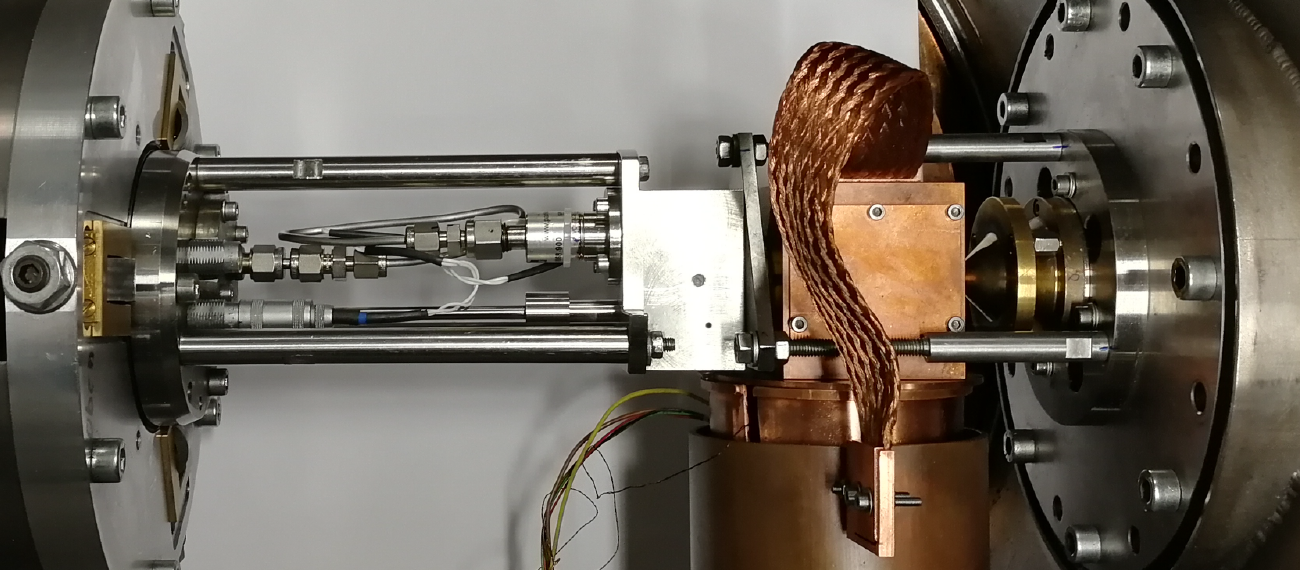When a molecular beam of neutral particles is entering an inhomogenoues electric field, it experiences a force in or against the direction of this field. The resulting deflection of the molecular beam is related to the electric dipole moment of the clusters, which has two main contributions. The first part is the permanent dipole moment. It describes the charge distribution in the cluster as a result of electronic and geometric structure, while the other part describes the distortion of the charge distribution through the electric field. The latter is therefore called an induced dipole moment. Both components of the electric dipole moment are shown schematically in Fig. 1.
The total energy depends on the electric field. This intercorrelation is called the Stark-effect. An induced dipole moment leads to a displacement of the beam in the direction of the field gradient (Fig. 1c) while a permanent dipole moment causes a beam broadening, because the direction of the acting force depends at any time on the orientation of the rotating cluster. Accordingly, by observing the deflection of a molecular beam in an inhomogeneous electric field, this concept can be used to draw conclusions about the permanent and induced dipole moment of a cluster. Since these are related to geometry and charge distribution, information about the structure can also be obtained. For the determination of the geometric structure, quantum chemical calculations (global optimizations) can be carried out which give possible structural candidates, their moments of inertia and electric dipole moments. With the help of these quantities the electric beam profile can be predicted using molecular dynamics (MD) simulation.
Literature
S. Schäfer, B. Assadollahzadeh, M. Mehring, P. Schwerdtfeger, R. Schäfer, J. Phys. Chem. A 2008, 112, 12312–12319.
H. Scheffers, J. Stark, Phys. Z 1934, 35, 625.
In principle, the deflection in the inhomogeneous magnetic field can be described analogously to the deflection in the inhomogeneous electric field, when electric field and electric dipole moment are replaced by their magnetic counterparts. On closer inspection however, there are fundamental differences: On the one hand, the magnetic dipole moment is not as firmly bond to the molecular structure as the electric dipole moment. On the other hand there are differences in the coupling of the magnetic dipole moment with other degrees of freedom of the cluster. For atoms, the total magnetic angular momentum quantum number is a good quantum number. The projection of the magnetic dipole moment on the magnetic field axis μz, which is proportional to the deflection, is therefore a constant of motion and can only take 2J+1 discrete values. Atoms in a Stern-Gerlach experiment with a total angular momentum quantum number J thus show an equidistant splitting into 2J+1 beamlets of equal intensity.
The description of Stern-Gerlach experiments on clusters is much more complicated than for atoms. The reason for this is the coupling of the electronic total angular momentum with the rotational and vibrational degrees of freedom of the cluster, whereby the total angular momentum quantum number is no longer a good quantum number. In the high-temperature limit, when a large number of vibrational states are excited, the molecular beam is deflected in the direction of the field gradient. Here, the deflection is proportional to the square of the intrinsic magnetic dipole moment of the cluster. If the internal degrees of freedom of the cluster are reduced or frozen, a broadening of the molecular beam is mostly observed.
Literature
W. Gerlach, O. Stern, Z. Phys. 1922, 349–352.




